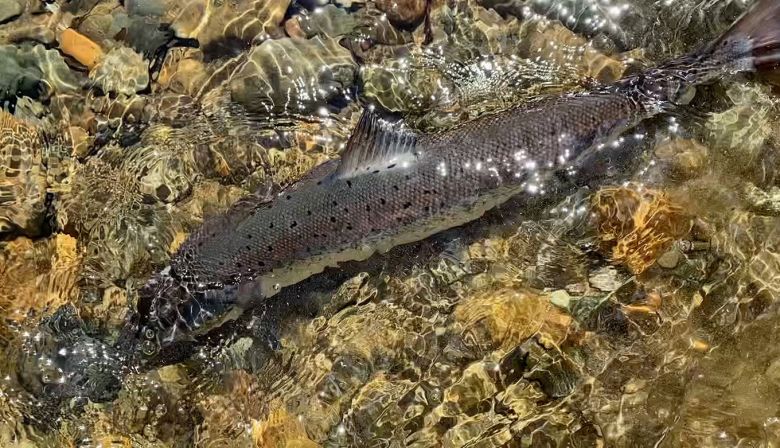
Subscribe & stay up-to-date with ASF
https://www.asf.ca/assets/files/Atlantic-Salmon-Listing-Letter-to-MDIFW-6-1.pdf

Ten conservation groups and six individuals with years of experience in fisheries issues have sent a letter to the commissioner of the Maine Department of Inland Fisheries and Wildlife, requesting the inclusion of Atlantic salmon on the state’s list of endangered species. That would help align the state with the federal government’s conservation efforts, according to the letter.
Atlantic salmon in most Maine rivers have been protected under the federal Endangered Species Act since 2000. Federal protection was expanded to all Maine Rivers in 2009, with the addition of the Penobscot, Androscoggin and Kennebec rivers. Among the results of the federal listing: Fishing for Atlantic salmon is not allowed on any Maine river.
Adding a state listing would help address ongoing threats to Atlantic salmon that the federal listing hasn’t dealt with, said John Burrows, the executive director of U.S. Programs for the Atlantic Salmon Federation.
“While some improvements have occurred, the stocking and management of non-native fish species in Atlantic salmon critical habitat remains a problem.” Burrows said. “In addition, there are virtually no protections in place for Atlantic salmon critical habitat. The federal definition of critical habitat includes only the wetted area of a river and stream and doesn’t include the riparian zone [close to the water] or adjacent upland areas.”
And those zones are critical for all kinds of fish and wildlife, he said.
“A state listing can help create state-level protections for this habitat, such as buffer zones, which will also benefit brook trout and a number of other fish, bird, and wildlife species that also need larger areas of protected habitat within our river corridors,” Burrows said.
Conservationists agree that this is a critical next step in restoring Atlantic salmon in Maine.
“As far as Atlantic salmon go, the horse left the stall 20 years ago when the feds listed the species as ‘Endangered,’ and it won’t be put back until we restore them or the feds throw in the towel,” said Bob Mallard, executive director of the Native Fish Coalition. “Due to the fact that the only active restoration efforts are in Maine, the likelihood that the feds will give up anytime soon is low. If you don’t like federal intervention, fix the problem.”
Getting the DIF&W to take a more active role in salmon restoration would make a huge difference, Mallard said.
“Without their full support this is not going to happen. The best way to do that, and the right thing to do at this time, is to list salmon as ‘Endangered’ at the state level,” he said.
In addition to the Native Fish Coalition, the groups seeking to have Atlantic salmon added to the endangered list in Maine are Native Fish Coalition Maine Chapter, Downeast Salmon Federation, Maine Council of the Atlantic Salmon Federation, Union Salmon Association, Upstream Watch, Friends of Merrymeeting Bay, Elliotsville Foundation and Kennebec Reborn. In addition, former DIF&W commissioner Ray “Bucky” Owen, fisheries scientists Edward Baum, Matthew Scott, Edward Baum, Joan Garner Trial, Mark Whiting and journalists Catherine Schmidt and Topher Browne signed the letter.
Mallard said the groups bonded together for a simple reason: To avoid extinction of Atlantic salmon in Maine.
“The longer we resist getting completely engaged the longer we will be in limbo, or worse, the more likely we will lose the species,” Mallard said.
Recognizing the special value of Maine’s Atlantic salmon is essential for restoration efforts to succeed, he said.
Endangered and threatened inland fish and wildlife species in Maine are listed under the Maine Endangered Species act or the U.S. Endangered Species Act, according to the DIF&W website.
“Species listed under MESA receive state protection; species listed under ESA receive federal protection; and species listed under both receive state and federal protection,” according to the website.
The DIF&W manages those species listed under the state act, and shares management responsibility with the U.S. Fish and Wildlife Service for inland fish and wildlife listed under the federal act.
The commissioner of the DIF&W is allowed to suggest species be added to the list if the species is at risk of extinction.
The department had received the letter and would review the request said Mark Latti, the DIF&W’s communications director.